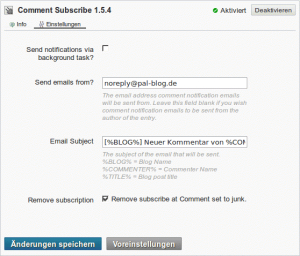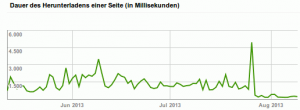Dieser Post wurde aus meiner alten WordPress-Installation importiert. Sollte es Darstellungsprobleme, falsche Links oder fehlende Bilder geben, bitte einfach hier einen Kommentar hinterlassen. Danke.
A MovableType installation isn't that easy like a WordPress upload, but it has many advantages. This is a little tutorial for setting up MovableType on a basic webspace without SSH access.
 You need:
You need:- 25 MB webspace for MovableType plus some space for your assets. This blog is currently about 500 MB big including all pictures, my limit was 2 GB to be secure for further growing.
- Running CGI-Scripts is mandatory, Perl also, but I didn't every see a Linux server without Perl.
- One mySQL database
- Full background publishing queue support requires a single cronjob. It's optional but I made it mandatory for me to get smoother publishing.
- All Required Modules
- DBI and DBD::mysql
- Digest::SHA
- SOAP::Lite
- One out of Image::Magick, GD or Imager
- XML::Atom
- Archive::Zip (for backups)
Any other missing module should be checked, but most others are either Perl core modules or not that important, like the SMTP modules which are usually not required to send mails from servers.






4 Kommentare. Schreib was dazu-
![]()
Jay
11.07.2013 12:21
Antworten
-
![]()
Sebastian
11.07.2013 20:53
Antworten
-
![]()
Jay
13.07.2013 14:03
Antworten
-
![]()
Sebastian
13.07.2013 18:35
Antworten
Yay, another Perl blogging / CMS engine that has gone all-Mysql. It makes me feel like a PHP developer.
I don't know, why they dropped Postgres support. But MT works around most mySQL problems (oops, didn't want to write two synonyms next to each other ;) ) even for really large installations. That makes that mySQL requirement a bit less bad.
Sadly, the Perl CMS that did keep support for Postgres and expanded to include support for Oracle and MySQL, Bricolage, seems to be abandoned, or in such a low maintenance state as to be moribund.
MovableType is using Data::ObjectDriver for all database access. Shouldn't be hard to re-add Postgres support as long as D:OD supports it, but I think SQLite might be a better choice for smaller sites.